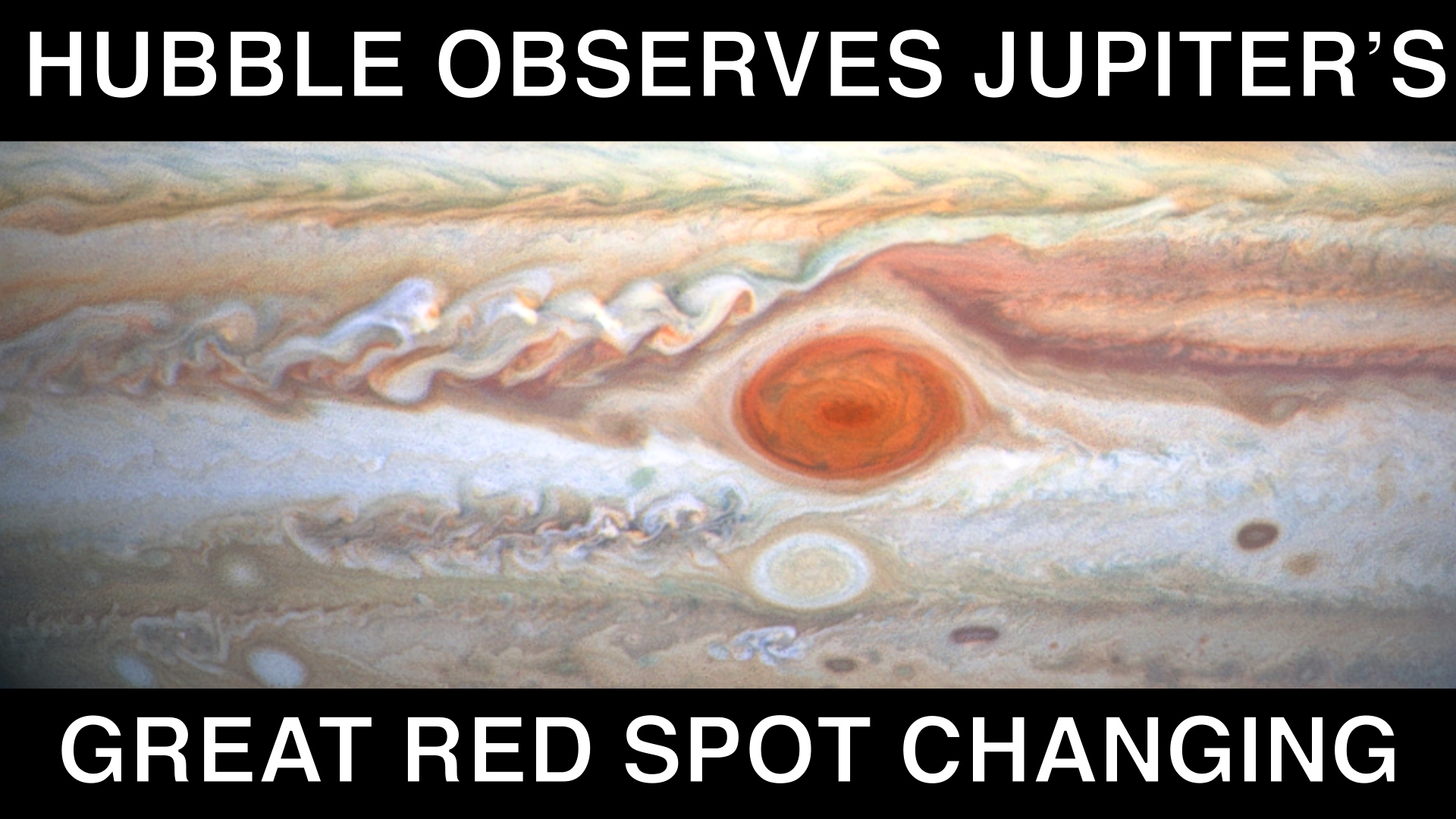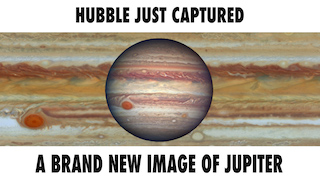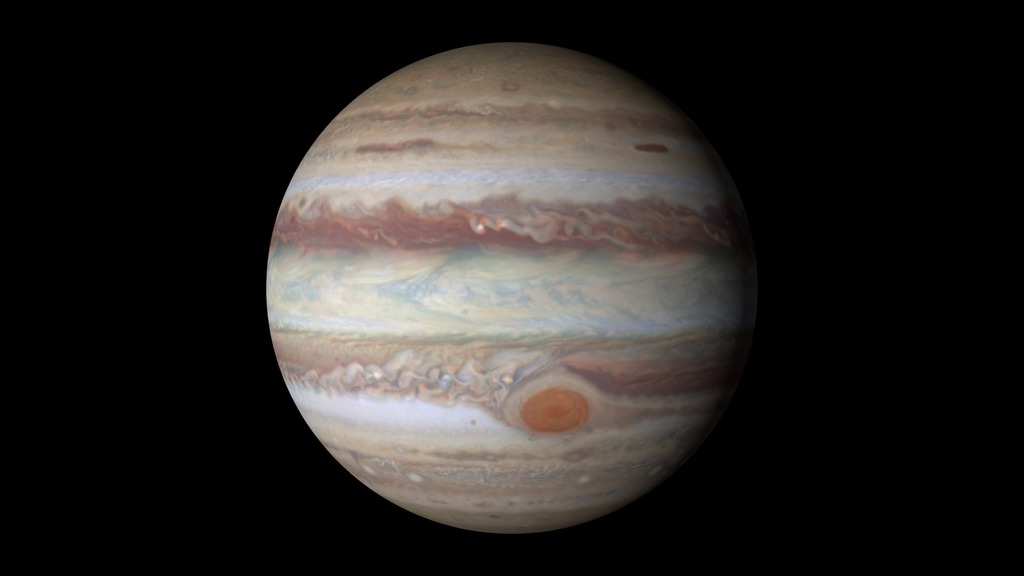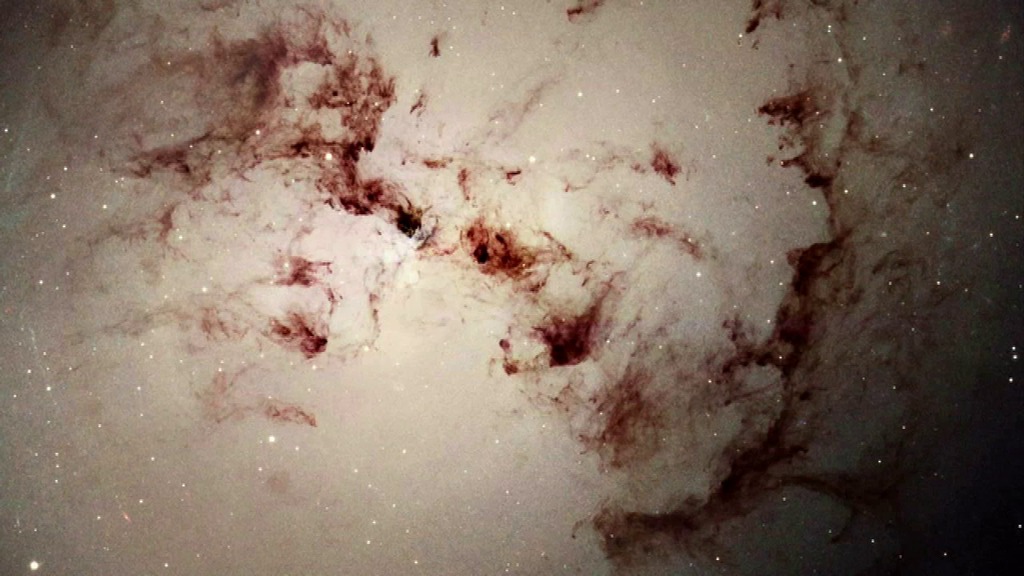New Hubble Views Of Jupiter Live Shots

Sky Watchers, Get Ready For Great Jupiter Viewing This Weekend!
The Giant Planet Is At Its Closest Approach To Earth, Shining Bright In The Sky Right Now
New Hubble Space Telescope Image Shows Giant Red Spot And Clouds In Beautiful Detail
Go outside and look up! For the next couple of days, Jupiter, the largest planet in our solar system, shines the biggest and brightest it will all year. On April 8, Jupiter will make its closest approach to Earth this year, making now the best time to view the giant planet. It’ll be up all night long! To the naked eye, Jupiter appears as a very bright star, but with a good pair of binoculars or a small telescope you should be able to see details on the planet and spot its four largest moons.
NASA’s iconic Hubble Space Telescope will take advantage of this great viewing opportunity and capture new, detailed views of Jupiter. Hubble provides important insight into how the gas giant’s extraordinary features like its famous Great Red Spot – a giant storm that is larger than Earth – is changing. The spot is mysteriously shrinking, and Hubble is one the tools scientists use to monitor those changes.
Join NASA scientists on Friday, April 7, from 6 a.m. – 11:30 a.m. ET to show your viewers Hubble’s newest image of Jupiter, talk about how you can spot Jupiter in the night sky and what scientists are learning about a potential water-rich moon of Jupiter.
Jupiter and its many moons form a fascinating “mini solar system,” and Hubble’s rich collection of images and data over the last 26 years offer important clues about whether any of Jupiter’s moons – like Europa – harbor liquid water and maybe even life. This data compliments other NASA missions that are looking at the Jovian system.
To book a window contactMichelle Handleman / michelle.z.handleman@nasa.gov / 301-286-0918
HD Satellite Coordinates for G17-K18/LO: Galaxy 17 Ku-band Xp 18 Slot Lower| 91.0 ° W Longitude | DL 12051.0 MHz | Vertical Polarity | QPSK/DVB-S | FEC 3/4 | SR 13.235 Mbps | DR 18.2954 MHz | HD 720p | Format MPEG2 | Chroma Level 4:2:0 | Audio Embedded
Suggested Questions: Location: NASA’s Goddard Space Flight Center / Greenbelt, Maryland Scientists:
1. Why is tonight the best time to view Jupiter, and where can we see it in the night sky?
2. The Hubble Space Telescope just took a new image of Jupiter. What does this new image show us about our solar system’s largest planet?
3. Jupiter is so big that 1000 Earths could fit inside it! What are we seeing that’s interesting lately on Jupiter?
4. Jupiter’s Great Red Spot has captivated astronomers for hundreds of years. Hubble has captured images of this spot mysteriously shrinking over the last two decades. Can you show us Hubble’s unique view of this feature?
5. Europa is one of the best places in our solar system to look for life. What have scientists learned about Europa?
Live Shot Details:
Dr. Jennifer Wiseman / Hubble Senior Project Scientist
Dr. Michelle Thaller / NASA Scientist
Dr. Amy Simon / NASA Scientist
Dr. Susana Deustua / Associate Scientist / Space Telescope Science Institute [interviews in Spanish]
B-Roll
Canned interview with Hubble Senior Project Scientist Dr. Jennifer Wiseman. TRT: 4:35. Includes wull transcript of text. Answers to the following questions are separated with a slate.
1. Why is tonight the best time to view Jupiter, and where can we see it in the night sky?
2. The Hubble Space Telescope just took a new image of Jupiter. What does this new image show us about our solar system’s largest planet?
3. Jupiter is so big that 1000 Earths could fit inside it! What other interesting things are we learning about Jupiter?
4. Jupiter’s Great Red Spot has captivated astronomers for hundreds of years. Hubble has captured images of this spot mysteriously shrinking over the last two decades. Can you show us Hubble’s unique view of this feature?
5. Europa is one of the best places in our solar system to look for life. What have scientists learned about Europa?
6. Where can we learn more?

The Hubble Space Telescope observed Jupiter on April 3rd, 2017 - just days before Jupiter is in opposition on April 7th. This new image of Jupiter is part of Hubble's Outer Planets Atmospheres Legacy program, which is one of many ways Hubble provides science on the Jupiter system.
View story about the new Hubble image
Click here fort HubbleSite release images.
Learn more about Hubble's OPAL program
Learn more about NASA's Juno mission here.
Dr. Michelle Thaller/ NASA Scientists canned interview with graphics. Includes full text of interview
Canned interview with Dr. Jennifer Wiseman Hubble Senior Project Scientist looking off-camera. TRT 6:44. Includes full text of interview.
For More Information
Credits
Please give credit for this item to:
NASA's Goddard Space Flight Center
-
Producers
- Michelle Handleman (USRA)
- Clare Skelly (NASA/GSFC)
-
Technical support
- Aaron E. Lepsch (ADNET Systems, Inc.)
-
Editor
- Katrina Jackson (USRA)
Missions
This page is related to the following missions:Series
This page can be found in the following series:Release date
This page was originally published on Tuesday, April 4, 2017.
This page was last updated on Wednesday, May 3, 2023 at 1:47 PM EDT.




![Music credit: "Triangulate" by Gianluigi Gallo [PRS]; El Murmullo Sarao SGAE, Universal Sarao SGAE; SaraoMusic; Killer Tracks Production MusicWatch this video on the NASA Goddard YouTube channel.](/vis/a010000/a012500/a012570/Hubble_Jupiter_Opposition_thumbnail.png)